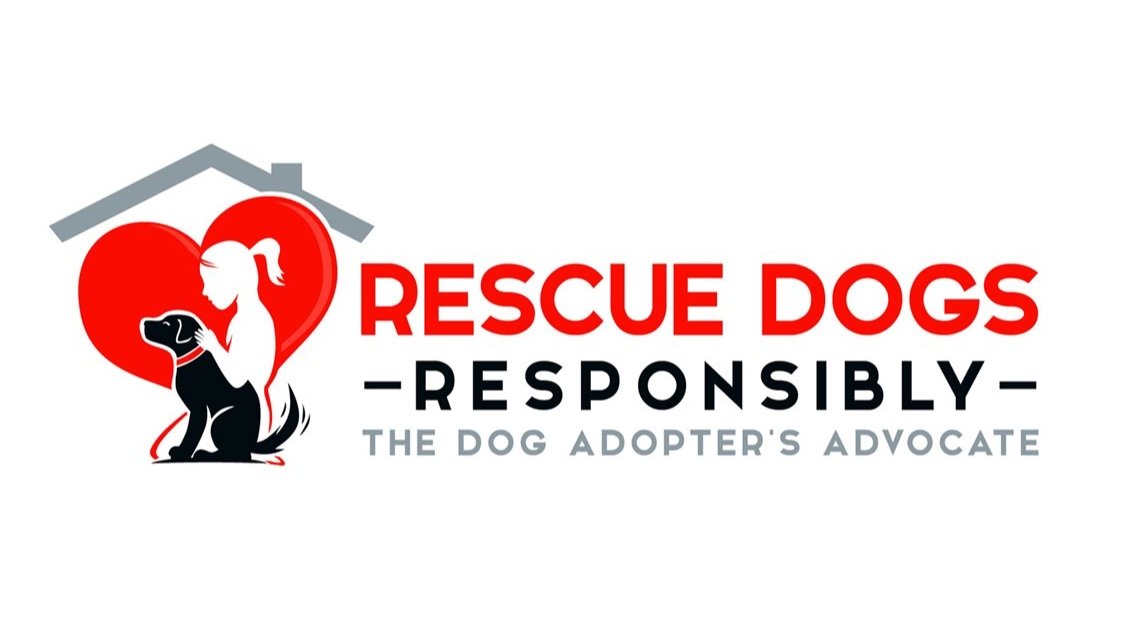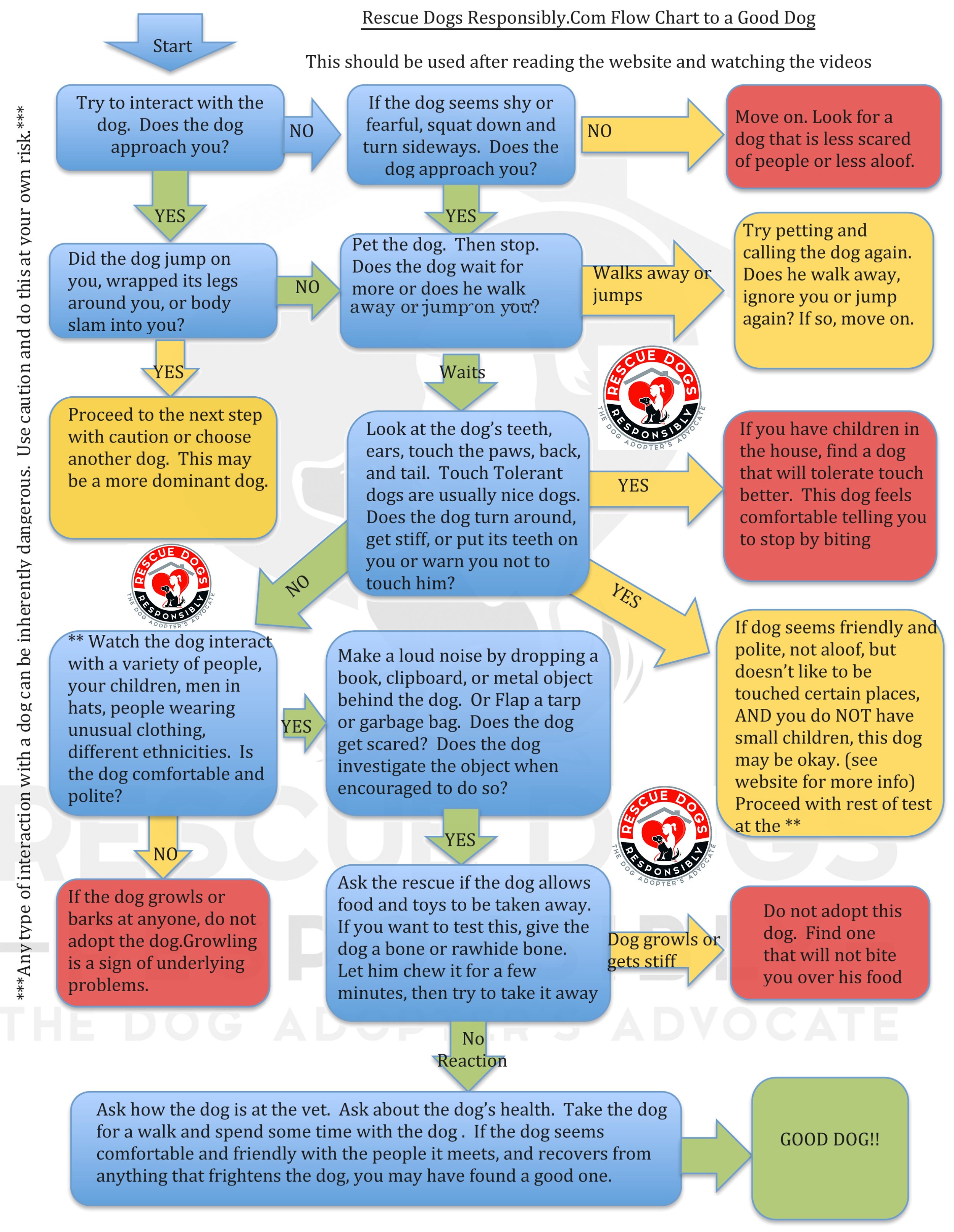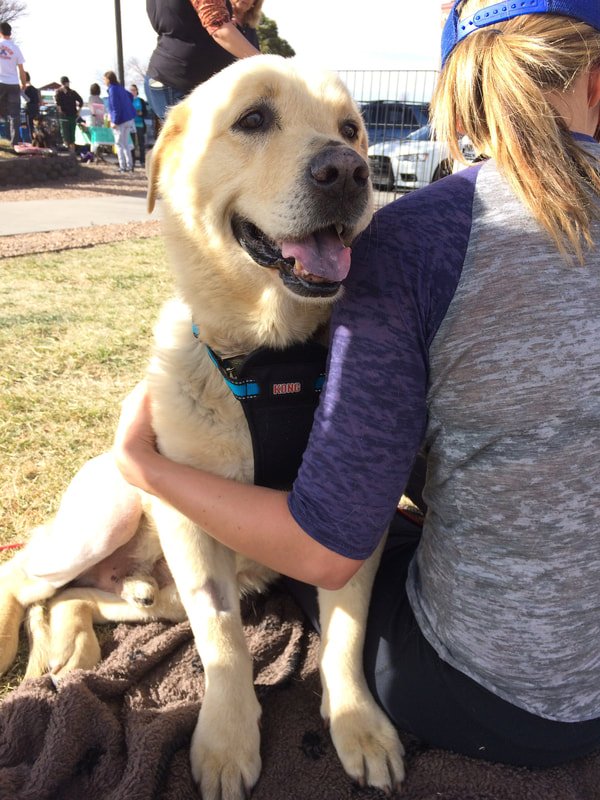
Rescue Dogs Responsilbly FREE GUIDE TO HELP YOU CHOOSE A SAFE,
ENJOYABLE DOG.
for dog adopters & Rescuers
-
Dog Adopters
Dog rescue can save a deserving dog's life and unite a family with a wonderful canine companion. My goal is to help potential adopters find a nice, safe dog. I want to empower the public to make educated choices about adopting a dog. Some dog rescues are adopting out difficult dogs with a bite history without telling potential adopters. Learn how to spot these rescues and dogs and take your business elsewhere. Make sure to evaluate the dog following all the guidelines - Don’t skip steps to greatiy imporve your chances of finding a wonderful dog. Start by finding a Responsible Rescue and learn how to adopt your dog match on the Adopt a Good Dog page.
-
Pro-Rescue and Pro-Adopter
Many dog rescues are pro-dog. Responsible rescues are also pro-adopter. By putting adopter's needs first, and treating adopters like customers, we can improve dog rescue and improve the adopting public's dog adoption experience. Pro-adopter means accurately assessing a dog's behavior and needs so the dog can be matched with an adopter. Adopting out dangerous dogs is a practice that puts people at risk and also degrades the reputation of dog rescues in general. If you are involved in dog rescue, read the improvements I suggest to make rescue more successful.
-
Choosing a Dog from a Rescue or Shelter
1. Research dog breeds and what characteristics your family is compatible with.
2. Find a responsible rescue or shelter to adopt from. A good rescue or shelter will have your best interest in mind as well as the dog’s. Here are some characteristics of responsible rescues.
*Thorough screening process of the adopter to find a good match for dog and adoptive family
*Adopting out healthy dogs. Temperament can be subdued by illness.
*Disclose all behavior concerns or issues to the adopter.
*Identify breed as accurately as possible
*List age of dog as accurately as possible
*Avoid dog flipping by keeping the dog a minimum of two weeks to accurately assess the dog's temperament
*Keep puppies with the litter mates and mother dog until 8 weeks of age if at all possible
*Rescue the mother dog along with the puppies
*Accept a dog that is returned graciously.
3. Learn how to select a safe family dog. CLICK HERE FOR HOW TO SELECT THE BEST DOG FOR YOU.
4. Use the flow chart below to help you find a compatible dog.
Flow chart to a good dog.
This flow chart can be clicked on and downloaded or printed out to take with you when you look at dogs to adopt or choose for rescue. DO NOT skip any steps. While this flow chart method has been used to pull hundreds of excellent dogs for rescue and for adopters, nothing is foolproof. This is a general guide and does not guarantee results. As always, use common sense and be careful when evaluating dogs. Stop the evaluation or use a leash and tie the leash to a firm object if any safety concerns arise.
Use the detailed description of the dog evaluation process below. You can see many examples of dog evaluations on my YouTube Channel playlist Dog and Puppy Evaluations
Dog evaluation
A dog will tell you who he or she is whether the dog is sick, scared, has excess energy, or been abused. Dogs have a choice of fight, flight, avoid, or accept. Don't choose a dog that chooses fight.
Every dog has its limits. Some dogs function great in certain homes and fall apart in others. No dog is perfect. These tips are only reducing the risk of a biting dog. There are no guarantees with living, breathing creatures.
Read this entire website before going to look at a dog. This is the only family member you get to choose.
Pick wisely.
How to Evaluate Dog Behavior
Educate yourself before going to dog rescue events. You would probably research a car you buy, or the school your child goes to, so why not the dog you will add to your family? Adopting a dog can be very emotional. Dogs are cute and lovable. Some rescue dogs have had tough lives and it is hard not to fall for the story the rescue tells you (which may or may not be accurate). It is important to put emotions aside and use your intellect, plus instinct, when choosing a dog. Many shelters and dog professionals use evaluations such as the Volhard Puppy Aptitude Test, ASPCA Safer Aggression Assessment, BARC, or the Socially Acceptable Behavior Test to evaluate a dog's personality. These tests are much more accurate in predicting aggression in dogs than shelter or rescue workers opinions*. Meet your potential rescue dog in a quiet location. If you are at a busy adoption event, ask to take the dog for a walk or go to a quiet corner away from other dogs and people. These evaluations test a couple of main traits described below.
DO NOT SKIP STEPS OR CHANGE THE ORDER OF THE STEPS
Dog’s Affinity for People
This is the number one, most important factor in adopting a dog. If the dog likes people in general, not just the shelter volunteer or rescue caretaker, then the dog can overcome a lot of other behavior concerns such as shyness and fear. It also indicates how friendly a dog may be to non-family members. Dogs that do not care much for people are challenging to train and make good guard dogs (which is usually undesirable behavior for a pet).
How to test a dog's "likeability" of people : Stand up straight or squat down and see if the dog comes over to you or wants to move toward you. You can talk to the dog softly. It is best if you don't bend at the waist over a dog. Shy or fearful dogs may be slower or more subtle. Shy dogs may crawl to you or lean towards you instead of bounding over. A friendly dog will be happy to see people. Observe how the dog reacts to different types of people; men, women, children. A dog that sniffs you and then ignores you is being aloof. Here is an video to help:
Dog’s likability of people
3. Is the Dog Respectful & Polite?
Respectful dogs are typically less challenging to their caretakers and make easier pets. Many behaviors that would be considered rude by humans is also rude in the dog world. If you have young or older people in your household, jumping dogs can represent a safety concern. Rude behavior can be mistaken for goofy or excited behavior.
How to test: Observe the dog. Polite dogs do not jump, body slam, nudge, get in front of, bite, nip, herd, or hump humans or other dogs. Does the dog keep four paws on the floor or does she jump on people? Jumping can be soft for attention, or it can assert dominance. Is the dog respectful of your children, sitting or standing nicely for attention? A dog that softly puts its paws on you is being more polite than a dog that jumps while pushing off or jumping and grabbing your leg. A dog that is disrespectful may become dominant and pushy without a firm owner. A dog that wraps its legs around you is most likely being dominant, not giving hugs. This video shows some examples of rude behavior:
Rude or Impolite Dog Behavior
2. Tolerance of Touch
Most dogs enjoy petting, but not all dogs tolerate a touch on the paw, flank, or looking at teeth. Knowing the dog's comfort level with touch is especially important if you have children in the house. With small children, a dog must be tolerant of a child's lack of coordination. (If your children do not treat dogs respectfully or kindly by pulling tails, poking, or hurting the dog, please wait until the child is older to adopt a dog.) If you are a quiet adult, then a less touch tolerant dog may be ok.
How to test touch tolerance: Pet the dog under the chin and see if the dog welcomes being touched. If the dog is comfortable, then touch his paws, side, rear end, and tail. If the dog gets stiff, freezes, or gives you a hard look, the dog is warning you to stop. That means the dog is not comfortable and may snap at you for touching him. If the dog stays with you after you stop petting him, he likes it. If the dog is trying to get away from you, he may not enjoy touch or may be afraid. Watch this video for examples of dogs accepting touch:
Dog’s Tolerance of Touch
4. Biting the Hand That Feeds You
Resource guarding is guarding a bone, food, or toys and can result in injury. It is fairly uncommon, but should be evaluated for. Ask the rescue if a bone or food can be taken away from the dog.
A dog with resource guarding can be unsafe so should not be in a home with children.
Testing for resource guarding should be done with care. Here are examples of what resource guarding can look like. It can be very subtle or obvious.
Resource Guarding
The Fear Factor
Helping a fearful, shy dog can be very rewarding. Some fear is caused by poor treatment or environment. I call this environmental fear. Some fear is innate from genetics. Innate fear is more difficult to fix. Dogs can be afraid of environment, but still like people, and vice versa. Severely fearful and even feral dogs can become great pets, but this requires work and professional help. See how to help fearful and feral dogs here. The innately fearful dog may eventually trust his owners, but may not be able to overcome genetics. Some dogs with fear of people will start reacting or snapping at strangers, especially around 1 1/2 to 2 years of age. It can take a year or more for a professional trainer to help genetically fearful dogs with mixed success. Dogs that are afraid of things such as slippery floors, stairs, and cars can be reconditioned to like these things and be nice dogs.
How to test recovery from fear:
Take an object like a clipboard, book, or a metal cup and drop it on the floor behind the dog. All dogs will startle. Dogs with a stable temperament (that can be helped) will recover from a startling event. Dogs with an innate fear will take a long time to recover or may not recover. If a dog likes people, it will overcome fear easier.
A fearful dog can recover with proper behavior training if:
The dog is unsure, but likes people
The dog enjoys a scratch under the chin and doesn't move away
The dog approaches people, even if in a submissive posture
The dog has soft eyes - almond shaped and more relaxed
Dog is not afraid of people, but of things
A fearful dog that is innately (genetically) fearful, and may always be afraid if:
The dog wants nothing to do with people besides its foster parent or caretaker.
If the dog woofs under its breath at people walking by or objects.
If the dog growls at anyone: man, woman or child.
The dog has "hard" eyes - wide open, glaring, showing whites of eyes - all warnings
Has spooky behavior by having long recovery from fear
Fearful Dogs that Like People - And Not
Other Tips
Ask Lots of Questions - Talk with the foster parent or caretaker of the dog. Ask how the dog does in the car, at the vet, out in public, with other dogs, and anything else that may concern you. Keep in mind what this person tells you is their opinion. A dog's behavior changes in different environments. If the dog is in a kennel type environment, the rescue will not know how the dog will do in a home with owners and territory. I just talked to someone that adopted a dog that the rescue deemed a "green light" dog, which is the highest rating. Within one week in a home, this dog tried to bite the dog walker. A lot of rescues do not conduct any kind of temperament evaluations that may have found this dog's likelihood to bite.
Listen to your Instinct - Instinct is different from an emotional response. Emotions cause us to feel sorry for dogs in bad situations, or to take a dog we know isn't right because we feel bad she is in the shelter. Instinct will tell you something is not right with the dog in front of you even though there is no evidence for that. Instincts are often dismissed as silly in today's world. If something doesn't sit right with you, perhaps it isn't right.
Good With Other Animals? Some rescues conduct home visits to introduce the new dog to your current pets. If this isn't available, ask if you can bring your current dog to meet the dog and move to a quiet location to see how they get along. If you have a cat, ask to have the dog "cat tested."
Don’t Sweat the Small Stuff - There are many things that are not that important when choosing a dog:
House training - generally easy to train a dog to potty outside with the use of a crate and paying attention. Even house trained dogs may falter in a new home and require supervision.
Breed - To an extent. There is so much personality diversity within any breed of dog I find breed to be of secondary importance. Temperament is so much more important than breed. However be aware of breed traits. A mastiff or livestock guardian are not dogs that are recommended for the average pet owner. A terrier will likely be terrier-like and determined with energy. Large powerful dogs need owners that respect their power and keep people safe.
Appearance - This is the number one reason people choose a dog and probably the least important in the long run. I love any dog with a friendly personality. Don't let good looks sway you into picking a dog that is not a good fit for your family.
Size - Some people are limited by their housing requirements. Otherwise be open to a wide range of sizes of dog. Great dogs come in all sizes.
Training - a good dog won't require much training to be a good companion. Training your new dog creates a bond between the two of you. If a rescue dog that has had a lot of training ask why. Rescues don't spend money on training unless the dog requires it.
Now Go Find Yourself A Good Dog!
**Evaluating and touching strange dogs comes with inherent risk. Please use caution when interacting with any unknown dog.**. Rescue Dogs Responsibly is not responsible for any injury caused by following these evaluation recommendations and is not a substitute for professional dog training.
Sources
Behavioral Testing of Dogs in Animal Shelters to Predict Problem Behavior by Van der Borg, Netto, and Planta
www.volhard.com/pages/canine-personality-profile.php "A Personality Profile of Your Dog"
www.volhard.com/pages/pat.php "Choosing Your Puppy"
www.boundangels.org/barc
www.aspcapro.org/safer
Waylan (above) was chosen by a rescue after he was abandoned by his owner. When we met Waylan his rear legs were not supporting his weight. We had to help him walk and lift him in the car. His personality won us over. After a vet check, we discovered Waylan needed two hip surgeries, treatment for arthritis of the elbows, and foxtails removed from most of his body. Foxtails had burrowed into his skin, and he patiently let us remove them with tweezers while someone massaged his head and neck. Pain did not phase this sweet dog. He tolerated grooming to remove the mats from his coat. He never tried to snap or bite us even though he was in pain.
It's How They Are Raised - FALSE. These two dogs, along with many othersI have met, disprove this myth. The dog at left was found by animal control next to a pair of bloody scissors that had just been used to cut her ears off. After being adopted, she lived as a family pet never showing any ill will to anyone. She became a therapy dog despite her tragic beginnings. The dog at right lived his life as a hunting dog. His ears were tagged (notice the notches) like cattle. He was neglected, starved, suffered massive ear infections, and didn't have many kind interactions with people. He was scared when he was adopted, but never showed any aggression towards kids or adults. Many dogs have suffered greatly, yet still find it in their hearts to love unconditionally. Conversely, many dogs are never mistreated, but can act poorly, even as puppies. Temperament, the personality the dog is born with, is an important factor (estimated 60%)* to the dog's behavior regardless of environment. Bad treatment can certainly affect a dog, but a good dog can endure a lot and still be a good dog.
*The Dog's Mind by Bruce Fogle
Dog Rescue Myths
There are lots of myths about rescue dogs. I want to discuss the most popular myths and dispel them. Myths do no one any good, not the human or the dog. Here are a few popular myths that the general public and dog rescuers often believe.
It's how they are raised. False
Rescue dogs cannot overcome their past. False
All dogs need is love. False
Pain is an excuse for bad behavior. False
When a dog's pain goes away he will act nicer. False
All puppies are nippy/ mouthy. False
An abused dog will act mean or scared. A mean or scared dog must have been abused. False
See below for a discussion of the myths
Rescue Dogs Cannot Overcome Their Pasts FALSE. Dogs are able to move beyond their pasts much faster than their human owners that dwell on sad stories. The dog at the left was found at a local shelter. She was so traumatized she would not walk, but crawled to me on her belly for affection. After two weeks in a healing environment, she is outgoing and friendly. Too many times, people expect their rescue dogs to be stuck in their pasts, and treat the dogs accordingly. Dogs need a confident, compassionate leader to build their confidence, not coddle their fears. Dogs want to be relaxed and happy. Humans can either help or hinder a dog's progress. As long as the dog's core personality is friendly, the dog will improve. Don't keep your rescue dog stuck in the past by feeling sorry for her. Let her overcome it. Let it go
All Dogs Need Is Love FALSE. Dogs need safety, security, boundaries and enrichment. For dogs to feel comfortable, content, and relaxed, they need to know their human "has their back". Dogs actually feel better if they have to work a little for their living and have clear rules and expectations. These rules can be as simple as good manners such as not jumping, no stealing food, and walking nice on a leash. Build good habits and don't allow bad ones to start. Giving a dog rules and leadership is actually showing the true meaning of love: honoring the dog for what he is and fulfilling his needs as a dog instead of human's need to fill an emptiness in our lives. Owning a dog is an opportunity to become the person your dog needs you to be.
Pain is an excuse for bad or aggressive behavior FALSE. It is a common thought that dogs act aggressively because they don't feel well or have pain. If only the dog didn't have that torn cruciate ligament, hip dysplasia, eye infection, ear infection, broken bone, or other ailment, then he would act friendly. Not true. I have witnessed so many sick dogs act nicely, even if accidentally bumped, lifted, or just feeling bad, this myth just isn't accurate. Dogs have a choice when reacting to pain. They can whimper, yelp, lick, move away or growl and bite. I want the dog that won't choose biting first. My own dog has undergone two hip replacements and one cruciate surgery. She was certainly in a good deal of pain before and after surgery. She never growled or tried to bite me. I have had foster dogs with horrendous ear infections, rotten teeth, fevers, coccidia, sarcoptic mange, broken toes, ticks that had to be pulled off, matted fur, and general poor health. None of them tried to bite me when caring for them. It is a clue to a dog's personality if it will bite instead of other communication. When a dog's health is improved, the dog feels stronger and may act worse than it did when it was injured or sick. Having new hips that didn't hurt did not change my dog for better or worse. She is still the same dog she was with the same issues.
When a dog's pain goes away he will act nicer. False. This is very similar to the above myth. When a dog's pain goes away chances are the dog will be the same dog, but feel better and be stronger. Of course no dog should live in pain, so it needs to be remedied, but don't expect a different dog after treatment.
All puppies are nippy or mouthy. FALSE. This myth is so ingrained in people's beliefs that I receive a lot of resistance on this one, even from professionals. Some puppies are mouthy, some are not. Puppies do not start teething until they are four months old. Most teething is not related to mouthiness or nipping. Puppies can explore items with their teeth and mouths, but this is much different than nipping. Choose a puppy that doesn't have this problem and remember nipping or mouthiness is not normal.
An abused dog will act mean or scared. A mean or scared dog must have been abused. FALSE. Not all rescued dogs have been abused. In actuality, a very small percentage have. Typically dogs that act aggressive have not been abused. Often dogs that act poorly are spoiled with few boundaries and their behavior is excused because they were "rescued". I have met so many dogs that were abused or neglected that are not mean. I have met many dogs that are mean that never had a hardship in their life. Behavior does not reflect the dog's past. Watch the video below and try to guess which dog has been abused.
Not All Puppies Are Mouthy




